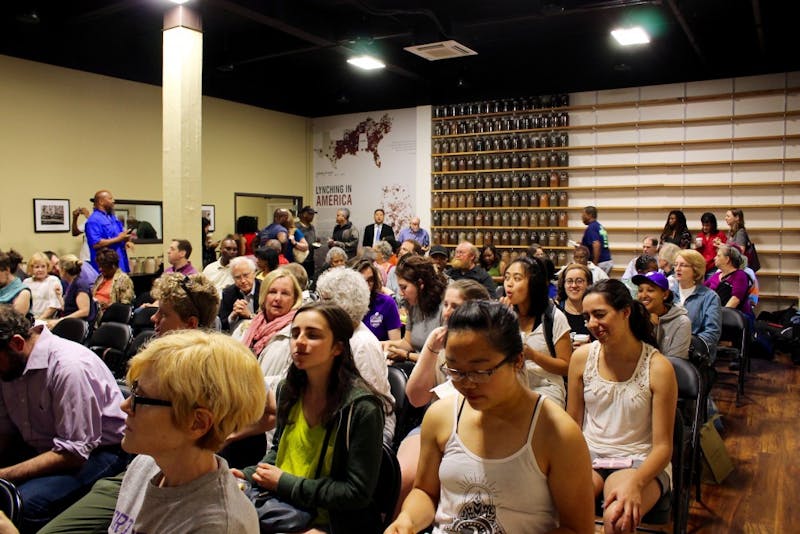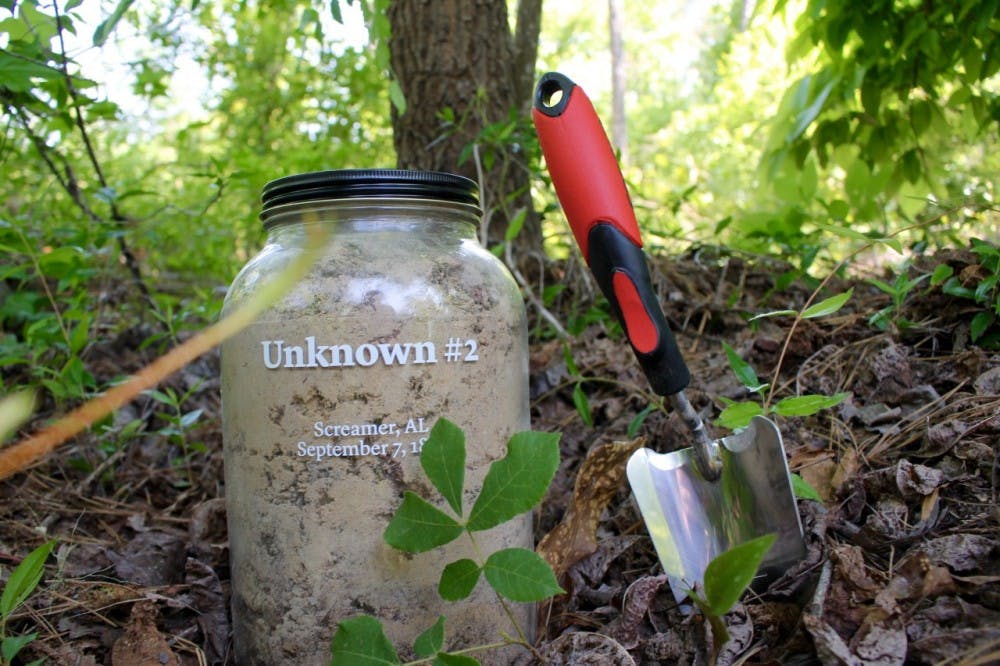The summer heat was already fast approaching though it was only May. Thirteen students knelt in the shade of the tall oaks in the woods of Eastern Alabama. Each person was on all fours, both knees and one hand in the dirt and the other hand gripping a trowel.
For those students in that moment, the trees were protection — protection from the sun, from the blistering heat.
But more than 100 years ago, in 1877, those trees were not shelter, but witnesses to the killings of seven black men.

The men were drinking from a well, when the white well owner found them and threatened them, even reportedly shooting at one man as he tried to drink. Later that night, a mob of white men returned and killed all seven men, leaving their bodies in an attempt to intimidate other members of their community.
The standard definition of lynching is an intentional killing, often by hanging, that is not necessarily racially fueled. However, lynching is deeply connected to violence against black communities in the South and throughout the U.S. for hundreds of years.
Flash forward to May 2016: History was dug up as these University of Portland students collected soil from that lynching site as a part of a national memorial.
The project is sponsored by the Equal Justice Initiative in Montgomery, Ala., which provides legal representation to inmates on death row. The founder of EJI, attorney Bryan Stevenson, who was recently profiled in the New Yorker , told the students and dozens of other volunteers that their efforts would help create a national lynching memorial in Montgomery, a city where hundreds of slaves were put up for sale every day in the decades leading up to 1865, when Congress passed the Thirteenth Amendment, making slavery illegal. But even after that, racial oppression continued in new ways including lynching of black Americans.
“We are burdened by a history of racial injustice,” said Stevenson. A history, he said, that still has repercussions in America today.

That day last May, the students met with Stevenson and the other groups volunteering, and learned about lynching and slavery, and their connection to racial disparities in current U.S. society.
“One of the most important parts of this memorial is to bring to life that the racial bias, and racism in general today, is directly proportional to lynching and slavery,” junior biology major Amen Mengistu said.
After a two and a half hour drive to the lynching site, the group broke off into pairs and each took a large glass jar with them to gather soil that would be part of the memorial. Each jar read “Unknown,” followed by a number one through seven, representing the seven men lynched at the site.
Junior organizational communication major Jacque Nelson said the group was led through a deeply wooded area before coming upon a “beautiful, open, sunny clearing” where she and her partner dug.
She said it was up to them to pick an area to dig that felt most appropriate.
“We had this responsibility to pick a place that felt just and respectful,” Nelson said. “That was intense, because who am I to say?”
The six-acre memorial, to be completed in April, will have 801 pillars for each Alabama county where a lynching was reported. The soil from each site will be included in the construction of the pillars. The pillars will hang from the ceiling in remembrance of the innocent who were lynched and hanged from the trees there.
“It’s giving an innocent person an opportunity to be represented as a human. It’s giving somebody life after they have already passed away,” Nelson said.
The students were able to contribute to this national memorial by participating in a three-week civil rights immersion trip through the Moreau Center. They traveled to Alabama, Arkansas, Mississippi and Tennessee, not only contributing to the lynching memorial, but learning about and meeting leaders of the Civil Rights Movement.
Program Manager for Community Partnerships and Service at the Moreau Center, Lindie Burgess, accompanied the students and hoped that they would bring new knowledge and a broadened perspective back to campus.

“We need to know someone else who is different from us before we can advocate for them. So why do we put students in situations like that?” Burgess said. “So that we can all love each other a little more.”
Senior Emily Fitzgerald reflected on the work that still needs to be done though the Civil Rights Movement was nearly 50 years ago.
“Comparatively, things have improved but they have not improved enough,” Fitzgerald said. “There’s still a lot of work to be done. The problems have just shifted; they haven’t really gone away.”
--
More information about the Moreau Center’s immersion opportunities can be found here.
First video courtesy of EJI, second video courtesy of Nancy Copic.








